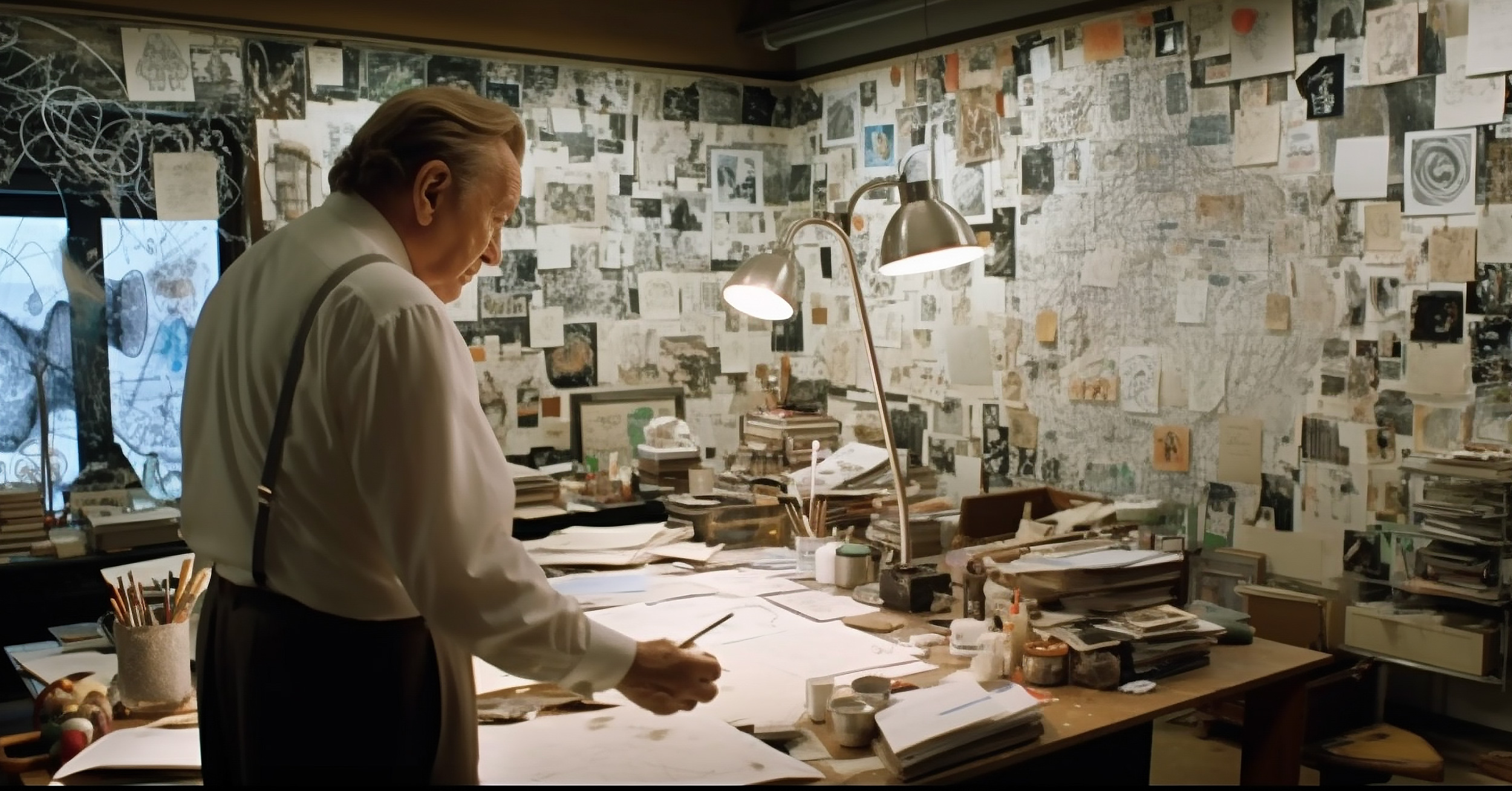
How To Make Sure You Are The Right Kind Of Thinker?

If You’re Not a Weirdo, You Can’t Be a Great Investor
Being biased is okay as long as we identify the areas in which we’re biased and assess our knowledge of the situation to avoid a false conclusion.
“Some women choose to follow men, and some women choose to follow their dreams.”
What can I say, she reminded me of someone I once knew. Not an excuse, just a fact.
“Otis. Tonight. Who’s in?”
Sometimes the shortest SMS packs the biggest punch.
Remember when Blackberry phones, text messaging and MySpace profiles were all the rage?
I’m talking about a time before Instagram, WhatsApp and Snapchat. You know, when life was simpler and Katy Perry’s “I Kissed A Girl” was ruling the radio airwaves.
Just Dance
It was May 28, 2008. Another cloudy spring day in San Francisco and another wobbly day in global financial markets.
The “Otis” in my friend’s text message was Otis Lounge. A now-closed nightclub tucked away in an alley off San Francisco’s Union Square.
Since it was already Wednesday, I saw no reason to pass on my friend’s invite. So I typed “Yes” into the Blackberry and sent my RSVP on its way. “Just Dance”, Lady Gaga’s debut single, had been released in April 2008 and gaining traction proved difficult. It definitely didn’t help that the song couldn’t get playtime on pop radio.
Indeed, Gaga’s debut was too much of a dance song for mainstream radio stations. And while it may seem hard to believe now, back then, dance music was not welcome on the air in Top 40 radio.
In the United States, “Just Dance” was to become a sleeper hit, spending almost five months on the Billboard Hot 100 before reaching number 1 in January 2009. The single is still among the best-selling singles of all time, having sold over 10 million copies.
In a few short months, Gaga was to sell-out stadiums around the world, but that Wednesday night she was going to perform in a much more personal setting. It was going to be the warm-up to her out-of-the-box rise to global fame.
A quick side note for the most ardent Gaga fans (aka “Little Monsters”): The majority of the first dozen episodes of her Gagavision vlog had been recorded around the corner from Otis Lounge at Xanadu Gallery and Café de la Presse while her first YouTube video had been posted the week before.
It’s fair to say that most people, including myself, had no idea who she was at the time.
Two Kinds Of Decision-Making
There are two over-arching kinds of decision-making. One requires research and careful thought, weighing different probable outcomes against each other. The other requires just going with your gut.
In today’s world, overloaded with information and impulses, good intuition are key precisely because there’s so much info we have to process on a daily basis. Think about how much data is flying at you at any given moment, both on and offline, and across multiple screens (yes, including this post). What’s the upside of letting this uncontrollable firehose of information drown out your brain with useless facts and figures?
It wasn’t that long ago that decision by intuition would’ve been dismissed as little more than a try at luck or some sort of hocus-pocus way of thinking. Truth is that inner voice working in tandem with unbiased information is likely to lead to far better decision-making.
Animal Instincts
Neglecting intuition and actively trying to cut it from your decision-making process will, in most instances, lead to opportunity for those who use it.
Most people think of intuition as general purpose, but it’s actually domain specific. In essence, intuition is nothing more than your subconscious picking up on clues and evaluating situations based on past experience, which happens so fast that the reaction is at a non-conscious level. All we’re aware of is a general feeling that something is right or wrong.
Take for example the case of the Formula 1 driver who stepped on the brakes while nearing a hairpin bend without knowing why — and as a result avoided smashing into a pile-up of cars on the track ahead.
At first, observers dismissed the event as good fortune and luck. It was only after the driver saw a video of the incident that he realized what had happened.
He realized he had taken clues from the spectators lining the racetrack. The crowd, which would’ve normally been cheering him on, wasn’t looking at him coming up to the bend but instead was looking the other way in a static, frozen manner. That was the cue. He didn’t consciously process this while approaching the bend, but his subconscious took over and prevented a potentially fatal crash.
The notion is that in certain situations, intuition is a better decision-making tool than a rational and deliberate calculation of the options.
Better Faster Stronger
The more you combine facts with intuition, the better your decision-making can become. Here’s why.
The current trend of big data, automation and artificial intelligence is great but no silver bullet. In a world full of uncertainty, big data and statistical thinking will provide an illusion of certainty and spotty results.
Take, for example, the 2008 financial crisis where rating agencies relied on big data and analytic models. The confidence within the system increased year by year, and shortly before the crisis, it topped out.
These approaches work only when the world is stable. They cannot predict instability, and have missed every global crisis in the past. It should be of no surprise then that intuition is a big — albeit invisible — contributor to success/survival in life and business. Just look at Steve Jobs and Albert Einstein.
Most business decisions — and almost all those that could result in economic gain for the decision maker — are made in the face of uncertainty. Put another way, they’ve too many unknowns and complexities to lend themselves to statistical analysis. No matter how hard you try.
Be that as it may, businesses prize structured and quantitative analysis which is why intuition is kept under wraps. Only when you take a closer look do you realize it’s there, hiding in plain sight.
Decision By Intuition
Executives would never admit this in public but “gut feelings” seep into the decision process at most companies.
In my 20 years working with Fortune 500 companies and other large international corporations, I observed the following two approaches.
One is to pick your arguments to support the conclusion rather than reach your conclusion from your arguments. An executive may have a gut feeling, but to “institutionalize” the decision they’ll ask their team to find facts that support the intuition. The result is what appears to be a fact-based, big-data-driven decision. The better approach would be to spend resources on trying to disprove the gut feeling rather than to support it. If it holds up, there’s a high probability that you have a winner on your hands.
The second approach — which is even worse than the first — is to adopt a defensive decision-making approach.
Here, the executive feels they ought to opt for an option that can’t be rationalized with available data. Fearing responsibility for negative outcomes, they’ll go with an alternate option that has data on its side. Even when they’re convinced it’s the wrong choice.
This is unfortunately a rather prevalent approach. You can’t imagine the number of once-leading companies that got sunsetted due to defensive decision-making.
It goes without saying that decision by intuition isn’t foolproof either. But that’s how ten person startups end up disrupting multi-billion dollar companies and how petite, platinum-blonde recording artists take the world by storm with strange sunglasses and lightning bolts on their face.
And that’s where I screwed up. Sorry, Stefani.
Gut Check
As someone who grew up in the 80s (with very fond memories), the David Bowie and Queen references sprung at me like a cornered alley cat. My intuition was telling me that Lady Gagaa was going to be just another 80s cover band (which, to be fair, were pretty popular at the time).
If only I had combined facts with intuition, I would’ve avoided a false conclusion. All it would’ve taken was five minutes on her MySpace profile to recognize that the on-the-nose 80s packaging was concealing a talented singer/songwriter. In the end, I ended up blowing off the invite.
To many of us, being wrong is a source of embarrassment. To me, recognizing my mistakes is a source of pride. Once you realize that mistakes are accidental opportunities, there is no shame in being wrong, only in failing to correct our mistakes.



